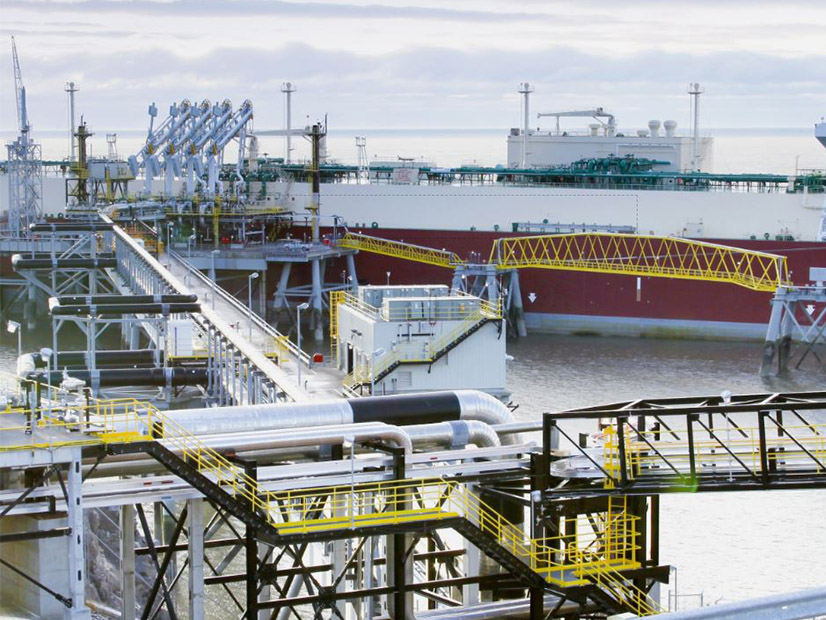The D.C. Circuit Court of Appeals on Tuesday found fault with reviews by FERC on climate and environmental justice issues for planned LNG projects in Texas, remanding the orders back to the commission for further consideration (20-1045).
The approvals include two different projects in the Brownsville area: the 750-acre Rio Grande LNG, which was proposed by Houston-based NextDecade, and the independently owned 635-acre Texas LNG. A petition against a third LNG project in the Browsville area, Annova LNG, was dismissed as moot as the project was discontinued in May.
“The commission’s National Environmental Policy Act (NEPA) analyses of the projects’ impacts on climate change and environmental justice communities were deficient under the Administrative Procedure Act (APA),” the court said in its ruling. “The commission’s determinations of public interest and convenience under the Natural Gas Act (NGA) were therefore deficient to the extent that they relied on its NEPA analyses of the projects’ impacts on climate change and environmental justice communities.”
FERC originally approved the projects in 2019, and rehearing requests were denied in early 2020. Petitioners in the case included the group Vecinos Para el Bienestar de la Comunidad Costera, the Sierra Club and the city of Port Isabel.
While the court remanded the orders back to FERC, it did not vacate the authorizations. The project developers argued that vacating the authorizations “would imperil intervenors’ ability to obtain funding necessary to complete the projects in a timely fashion.”
“We find it reasonably likely that on remand, the commission can redress its failure of explanation with regard to its analyses of the projects’ impacts on climate change and environmental justice communities, and its determinations of public interest and convenience under Sections 3 and 7 of the NGA, while reaching the same result,” the court said in its ruling.
“As I said in my dissents when FERC approved these projects nearly two years ago, neither the Natural Gas Act nor the National Environmental Policy Act permit FERC to assume away the impacts of building and operating any natural gas facilities,” FERC Chairman Richard Glick said in a statement. “This decision clearly demonstrates that the commission has the authority and obligation to meaningfully analyze and consider the impacts from GHG emissions and impacts to environmental justice communities. Moreover, failure to do so puts the commission’s decisions — and the investments made in reliance on those decisions — in legal peril.”
Directives to the Commission
The court agreed with the petitioners’ arguments that FERC failed to sufficiently address the impact of greenhouse gas emissions by the projects because it didn’t review the social cost of carbon or a similar accepted scientific methodology to evaluate their contribution to climate change.
FERC originally explained in its orders that it was “unable to determine the significance of the project’s contribution to climate change” and that “there is no universally accepted methodology to attribute discrete, quantifiable, physical effects on the environment to [the] project’s incremental contribution to” GHG emissions.
The petitioners argued that FERC was “required to do more,” saying federal regulation 40 C.F.R. Section 1502.21(c) requires the commission’s evaluation of environmental impacts to be “based upon theoretical approaches or research methods generally accepted in the scientific community.”
“On remand, the commission must explain whether 40 C.F.R. Section 1502.21(c) calls for it to apply the social cost of carbon protocol or some other analytical framework as ‘generally accepted in the scientific community’ within the meaning of the regulation, and if not, why not,” the court said.
The court also found FERC’s environmental justice analysis for the LNG projects to be flawed, siding with the petitioners that the commission’s decision to analyze the projects’ impact only in census blocks within 2 miles of them was “arbitrary.” The court said FERC determined in the orders that the environmental impacts of the LNG projects would extend beyond 2 miles, citing that air quality impacts could occur within a 31-mile radius.
The ruling said FERC must explain why it chose a 2-mile radius to determine environmental justice impacts or select a different radius.
“The commission has offered no explanation as to why, in light of that finding, it chose to delineate the area potentially affected by the projects to include only those census blocks within 2 miles of the project sites for the purposes of its environmental justice analyses,” the court said.
The court did not set a date for when the review of the orders must be completed.



